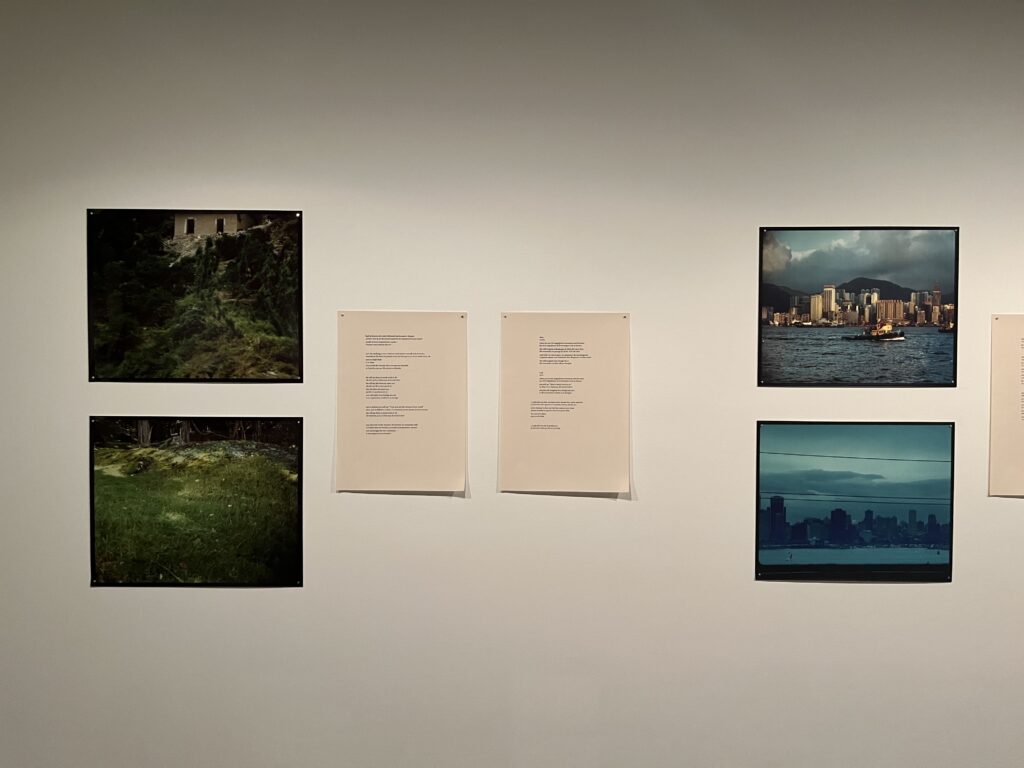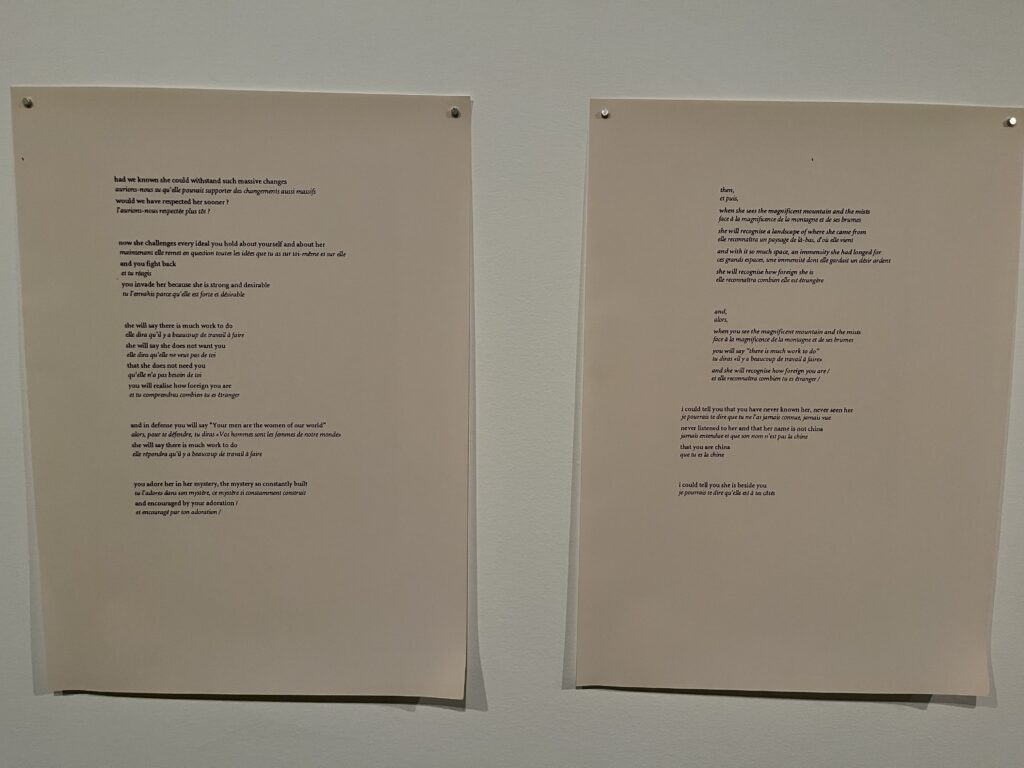Morris and Helen Belkin Art Gallery, Main Mall, Vancouver, BC, Canada
As our investigation into the inquiry progressed, we began to wonder: is there another public artwork on campus that represents something absent? And if so, who is the artist? What and who are they representing in their work? A visit to the Belkin Art Museum on UBC campus was inspired by our wonderings in addition to the inquiry’s connection to the artist Esther Shalev-Gerz and her multiple collaborations with the gallery. The Museum offers free entry, making the exhibits accessible to the public. The exhibit currently being shown is Traces, Erasures, Resists. In a brochure provided by the Museum, containing a curatorial essay by curator Amy Kazymerchyk, explains that: “The exhibition title references processes related to printmaking, while at the same time speaking to the absent narratives, redacted perspectives and critical refusals that are latent in official publications.” Keeping our inquiry on public art as a tool to reclaim land and the exhibit’s focus on absent narratives in mind, Lia and I explored the exhibit.
“And if so, who is the artist?” We discovered that the artist, Laiwan, was born in Zimbabwe and immigrated to Canada to escape war in 1977. The first time Laiwan returned was in 1982, after Zimbabwe had gained independence from Great Britain. Laiwan is an educator, a local activist, a writer- an interdisciplinary artist. She co-founded the Or Gallery, a contemporary art gallery, in Vancouver in 1983.
“What and who are they representing in their work?” The photo and text-based installation below is just one snapshot of the photography, film, language and text featured in the exhibit. The photography included in this first part of the exhibit is largely absent of people and focuses on the geography of the land. Through photographs that display Zimbabwe’s geography coupled with text revealing a narrative supporting erasures and absences in the land, Traces, Erasures, Resists is an artwork that represents the independence after war through geography and absence. The serene green and rocky landscapes presented a notion of peace. As we moved our attention to the text, we noticed that Laiwan personified the land as female to emphasize the destructive and exploitative nature of colonialism: “you invade her because she is strong and desirable/tu l’envahis parce qu’elle best forte et désirable [….] she will say that she does not want you/elle dira qu’elle ne veut pas de toi”. A deep connection to land and place is demonstrated. Moreover, the installation represents the desire to make visible to others the geopolitical changes that can evoke a juxtaposition of emotions between familiarity and unfamiliarity after absence from a place. This is represented by the moment in the text where the ‘she’ switches from place to person, portraying the return home to see change after experiences such as displacement and immigration: “she will recognize how foreign she is/elle reconnaître combien elle est éstrangére”. In her curatorial essay, Kazymerchyk notes the “resilience [which] saturates every image” despite the absence of people in the captured landscapes. This installation in Laiwan’s Traces, Erasures, Resists captivates its visitor as it tells a story of colonialism, resilience, identity and absence. Most importantly, it represents a story of the reclaiming of land and place.


We also wondered about Laiwan’s choice to include a French translation under the English text throughout this installation of the exhibit, did this represent Laiwan’s immigration to Canada and the need to adapt to a new landscape, new cultures, new languages…? We concluded that the languages being represented in the installation were adjacent to images of Zimbabwe and that they were both colonial languages supporting the narrative of reclaiming identity, land and place.
The exhibit will run until April 10th, 2022.
We will continue to investigate these questions and ideas. In particular, to investigate The Shadow Tree as a public artwork on campus that represents something absent.
– Mila and Lia
